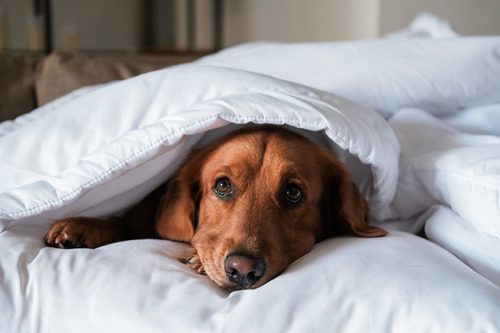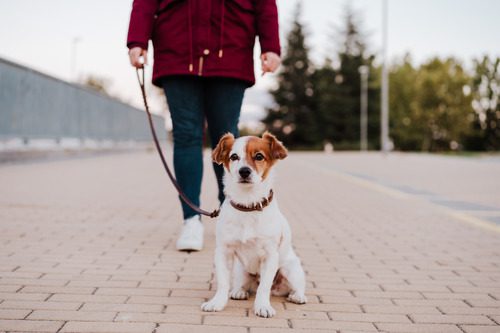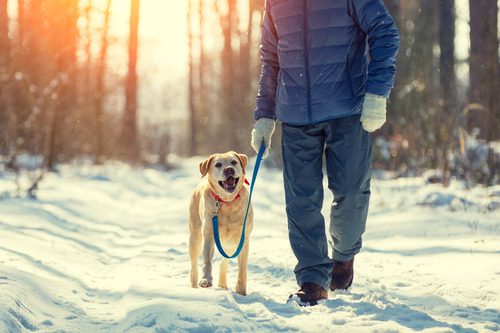6 Tips to Help Prevent Separation Anxiety in Dogs
Do you have an anxious dog? Do you think your pup could be anxious due to separation anxiety? Are you worried about helping them feel better from this experience and getting back to their usual self?
Separation anxiety is very common in dogs, and it can unfortunately become a big issue for some pet owners, too. In this article, we’ll walk you through some of the best tips you can try when it comes to caring for a dog who has separation anxiety. With the help of this information, you’ll be well on your way to helping your dog feel better when they are left alone.
Tips to ease or prevent separation anxiety in your pup include practicing leaving them alone for short periods of time, teaching them redirection commands, changing your own leaving habits as a pet owner, exercising your dog, giving them toys and puzzles to keep busy, and giving them medication.

Practice, Practice, Practice
Practice can make a big difference for your dog. If you’re almost always home, you may notice your pet has much more trouble with separation anxiety compared to when they are used to being left alone.
Practice by leaving your pup home alone for 5 minutes at a time, then rewarding them with plenty of treats and praise when they are successful. Over time, you can increase these stays until they are able to be on their own for up to an hour without issue.
Teach Redirection Commands
Redirection commands can help your dog stay settled when you’re getting ready to go out the door. These commands also work by distracting them with another thought, so they don’t realize they are being left alone.
Commands that work for some dogs include sit, stay, lay down, and go to bed. For example, if your dog is starting to get nervous about you leaving and you tell them to go to bed, they will likely stay there long enough for you to get out the door and to your vehicle. By the time your pup gets up again, you will be gone, and they will be distracted during the process.
Abandon Leaving Cues
Leaving cues are habits you have when you’re getting ready to leave home. Your dog picks up on these and recognizes that they are about to be left alone. This, in turn, causes their anxiety to increase before you ever go out the door.
Some common leaving cues include putting on your shoes, picking up your keys, or turning off the lights. Although you still need to do these things before you go, try performing these activities some time before you leave, and then sitting back down again for a while. With enough time and practice, your dog will stop associating these cues with you leaving.
Exercise Your Dog
Exercise can help your dog feel more tired and less energetic when you leave home. If your pup has had enough exercise already that day, they will likely want to nap in the quiet house rather than panic because they are alone.
Mental stimulation can help dogs settle down, too. Consider some puzzle toys for your dog, which encourage them to use their mind to solve simple problems and receive treats as a reward. Using these toys before you leave can help them stay calm, too.
Provide Treat Toys
Treat toys are an excellent way to help dogs deal with separation anxiety. These toys are typically safe enough to give your dog when no one is around to supervise, as long as they are used according to the package’s directions. They can be filled with treats and used to keep your dog occupied when no one is home.
One of the most common and most widely recommended types of treat toys is the Kong. These rubber toys are made of heavy-duty materials that withstand a lot of chewing. They can be filled and frozen, then given to a dog to lick and chew on as a distraction.
Try Medication
If no other methods work, you may want to consider talking to your vet about medication for your dog. Most vets and pet owners alike prefer to resolve separation anxiety without the help of medication, but sometimes, it is a necessary solution to a complicated issue.
Your vet may prescribe your dog anti-anxiety medication, antidepressants, or sedatives, depending on the specific dog’s situation and symptoms. You should follow your vet’s advice when giving your pet this type of medication and never give your dog human anxiety medication.
By following this guide, you can try several methods for helping improve your dog’s trouble with separation anxiety. Although some dogs may require medication and help from the vet, many more can recover significantly by following tips like those outlined above.
Talk To Your Vet
If you are still having trouble with your dog after trying all the rest of these methods, it may be time to talk to your vet. You might also want to speak to a professional dog trainer for assistance, as training may sometimes help cut down on separation anxiety issues, too.
For pups in the Plymouth Meeting, PA region, The Village Vets is available at (484) 820-1700 to answer any questions or discuss concerns.
Recent Posts
About The Village Vets
The Village Vets of Plymouth Meeting offers excellent service to clients in a comfortable, friendly atmosphere. To learn more about us and how we can better serve you and your pet here in Plymouth Meeting, PA, click the button below.
Share This Post
Recent Posts
About The Village Vets
The Village Vets is a network of three animal hospitals based in Atlanta, GA and the surrounding area. We offer honest, excellent service to our clients in a comfortable, friendly atmosphere. To learn more about our locations and how we can better serve you and your pet, click the button below.




